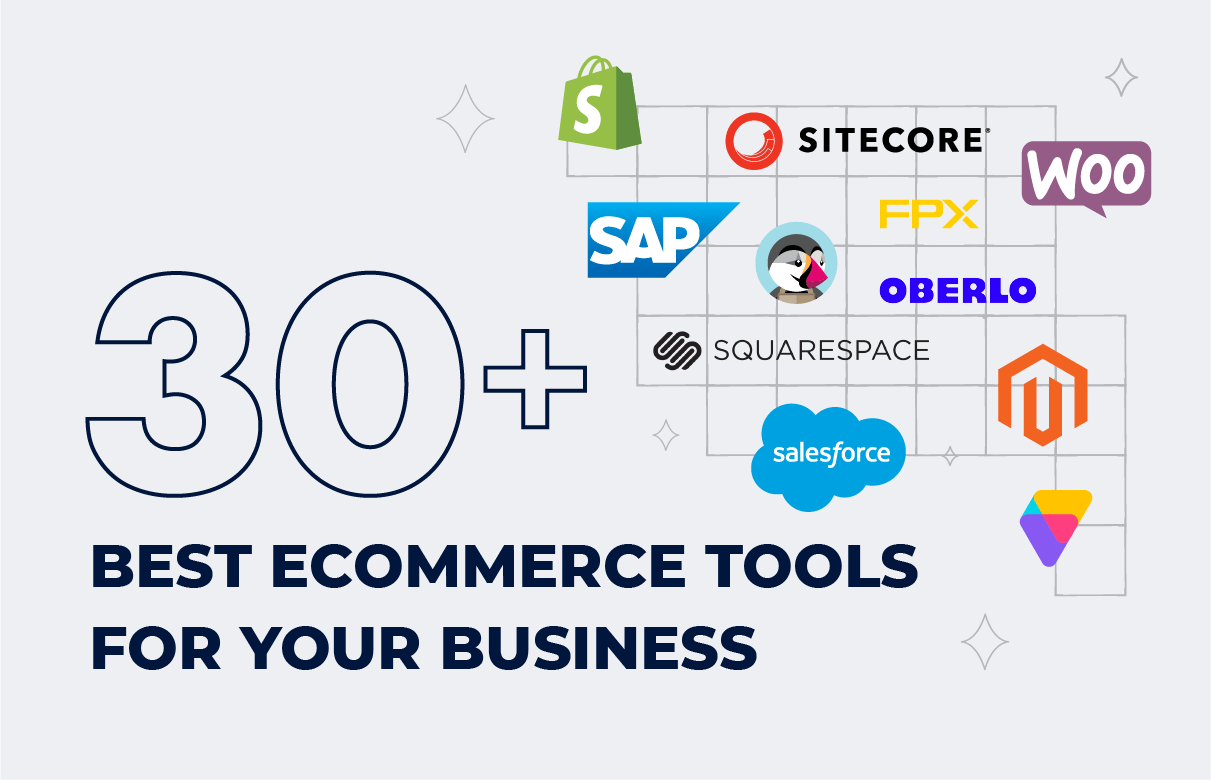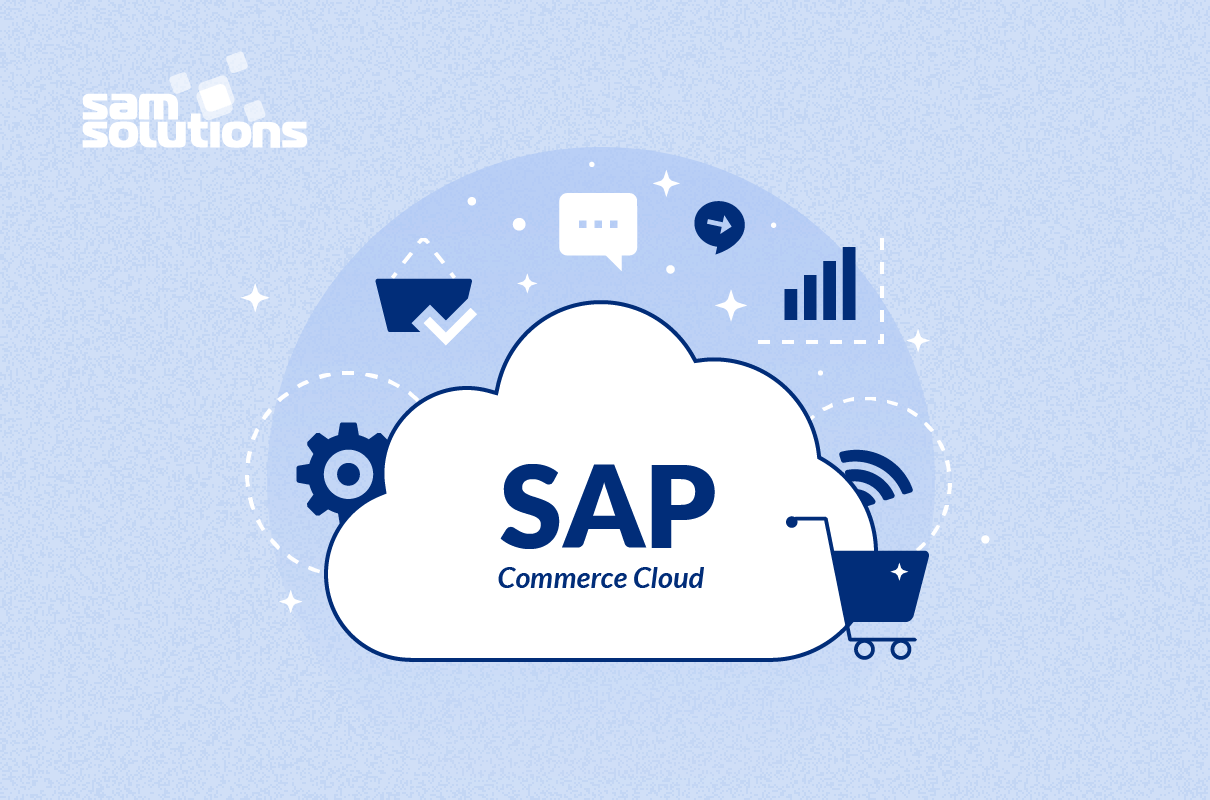Online shopping has become a favorite option for consumers of all ages. People can now buy literally everything, from electronics and furniture to clothing and food, and have these goods delivered to their doorstep, often on the same day they place the order online.
Jumping into the tech race — this is the only way for modern merchants to stay afloat and align with customer expectations. What does 2025 hold in store for them? What are the current trends in ecommerce? Read the article to get the answer.
Request SaM Solutions’ ecommerce development services to grow your client base and boost profitability of your online sales.
1. Artificial Intelligence (AI)
We can say with confidence that artificial intelligence and machine learning technologies are becoming ubiquitous. It seems that the words ChatGPT, Claude, Midjourney, or DeepSeek are already on everyone’s lips and have become something commonplace. There is hardly any sphere of life that is not affected by smart innovations today. The ecommerce industry is among those spheres that integrate AI into their processes quicker than others.
Data by Statista shows the continuous and rapid growth of artificial intelligence usage in retail. In 2020 the global market for the use of AI in retail was $3.75 billion, and in 2024, it reached $10.76 billion, i.e., tripled in four years. It is projected to triple again in the next four years, so by 2028, it will probably reach the mark of $31.18 billion.
Many experts agree that the key goal of implementing AI solutions in commerce is to build trust between brands and customers by means of personalization. Hence, this is true to say we are entering the era of shopping based on personal relationships and targeted assistance. Impersonal marketing is left behind.
It should be noted, however, that if you implement a poorly trained AI model (e.g., based on inadequate or irrelevant data) into your ecommerce system, you can dramatically worsen user experiences and alienate customers from your online store.
Below are the most prevalent applications of AI in ecommerce.
Amazon, Walmart, Starbucks, H&M, Nike, and other prominent ecommerce brands are already utilizing artificial intelligence to the fullest.
2. Augmented Reality (AR) and Virtual Reality (VR)
One of the ongoing problems for internet retailers is that consumers can’t try on clothing and accessories or see how furniture will fit in their homes before buying. That’s why the present and the future of digital customer experience in retail is inextricably linked with augmented reality.
Augmented reality (AR) and virtual reality (VR) are technologies that retailers can use to compensate for the touch-and-feel experience provided by offline shopping. Buyers can visualize products in their intended environment: assessing how a dress fits, how a sofa matches their living room wallpaper, or the space a table occupies in the kitchen. A realistic feel of virtual products in personal spaces is the best encouragement to complete the purchase.
Retailers utilizing AR/VR features in their digital stores report the following interesting facts:
- 40% of consumers agree on higher prices if their shopping journey is enhanced by AR/VR features.
- Product returns are reduced by 25%.
- Conversion rates have increased by 20%.
Consequently, ecommerce applications such as virtual dressing rooms and product configurators are gaining popularity.
Brands like IKEA, L’Oreal, Sephora, and Adidas are offering AR applications to make the online shopping experience as realistic as possible.
3. Social Commerce
The ecommerce industry has become intricately linked with social media, giving rise to a new ecommerce subcategory — social commerce. This trend has huge potential:
- Paid social media ads attract a wide audience of prospects.
- Direct sales through social media channels simplify the buying journey.
- Appealing brand content improves customer engagement and loyalty.
- Influencer marketing — the promotion of products with the help of famous people, bloggers, and other influencers — boosts sales.
Brands not yet active on platforms like Instagram, Facebook, TikTok, and other socials, are encouraged to invest in social commerce to capitalize on this growing trend.
4. Mobile Commerce
Nearly 96% of the world’s digital population is thought to be mobile device users of the internet. Mobile shopping is among the main 2025 ecommerce trends. A surge in the number of mobile internet users can be explained by the broad availability of smartphones and reliable connectivity.
The momentum of mobile commerce (m-commerce) is evident, as sales reached an impressive $2.52 trillion mark in 2024, making 60% of the total global ecommerce sales.
Understanding this trend, internet retailers are giving mobile optimization top priority. Some of them turn to adaptive design, creating a mobile version of their website with simplified navigation and essential product information suitable for smaller screens. Others prefer mobile application development, which offers expanded functionalities.
5. Personalization
The era of one-size-fits-all ads and mailings offering random products is over. Today, retail is based on personalization. Modern online shoppers want to find exactly what they need, not just what the retailers wish to sell. If you want to improve your commerce business profit, you need a strategic marketing personalization plan.
91% of consumers are more likely to shop with brands that offer tailored recommendations, claims Accenture. For 80% of consumers, tailored shopping experiences increase their likelihood of becoming repeat buyers. Studies show that personalization can boost marketing spend efficiency by 10% to 30%, lower acquisition expenses by up to 50%, and raise revenues by 5% to 15%.
AI-powered analytics, search, and recommendations now make it possible to track online customer interactions, analyze previous orders, and identify their interests and preferences.
6. Sustainable Products and Practices
More consumers today demand for environmentally conscious practices while shopping. Over 70% of buyers are even ready to change their consumption habits in order to reduce their harmful impact on the environment.
That’s why sustainability is among the upcoming trends in ecommerce. In ecommerce, sustainability can be represented in different ways:
- Reducing energy waste in warehouses and offices
- Using recyclable packaging
- Reducing the overall amount of packaging
- Lowering returns
- Implementing carbon-neutral delivery options
The emergence of rental platforms and second-hand markets highlights even more the change towards sustainable consumption in the ecommerce industry.
7. Subscription Models
The popularity of ecommerce subscriptions is growing. It is super convenient when customers can get regular deliveries of products or services based on their preferences and waste no time on placing repeated orders.
For example, you can subscribe to weekly food boxes containing basic items you prefer eating. Meanwhile, services such as entertainment content or analytics reports offer flexible subscription options, ranging from monthly to annual plans.
For ecommerce business owners, subscriptions provide a unique opportunity to predict sales and plan the inventory, thus reducing expenses.
8. Quick Commerce (Fast Delivery)
To attract and retain customers, savvy ecommerce enterprises offer expedited delivery services, such as same-day or next-day options. In fact, these are becoming standard offerings for the instant gratification of online shoppers.
Ecommerce companies control shipping costs and guarantee quick and consistent delivery of goods due to strategic partnerships with reliable logistics providers.
Some retailers are exploring drone delivery services like Amazon Prime Air. Drones can access difficult-to-reach areas, eliminating complicated routes, which helps to cut the shipping time by up to 50%. More importantly, their electric-powered technologies help to lower carbon emissions.
9. Influencer Marketing
For buyers, it has always been preferable to interact with human representatives who can give advice on this or that product and share personal experience. In a traditional society, it is the word-of-mouth practice, while in the digital word, it goes about influencer marketing, which is among the top ecommerce development trends now.
Influencers are people who build trust with their audience through authentic content for a specific niche. More often, they have a strong presence on social media platforms. They may collaborate with brands to promote products or services, which is mutually beneficial.
Even when collaborating with nano-influencers (who have up to 10,000 followers), brands report earning about $4 for every $1 spent on campaigns. Such financial effectiveness is possible due to highly engaged (though small) audiences.
10. Flexible Payment Options
A variety of payment methods gives ecommerce stores a competitive advantage, not limiting customers in their actions and enabling them to choose how to pay depending on financial situations. This helps reduce cart abandonment.
Payment options can include debit and credit cards, bank transfers, cash, mobile payments, electronic wallets, and cryptocurrencies.
Allowing consumers to save their payment information for future transactions simplifies the next checkout.
Why Choose SaM Solutions for Ecommerce Development?
SaM Solutions has been on the software development market for over 30 years. Our professional engineers, architects, PMs, business analysts, designers, QA experts, and DevOps specialists can meet any requirements and lead your project to success.
We work with the leading ecommerce platforms: SAP Commerce Cloud (SAP Hybris), Sitecore, Umbraco, Adobe Commerce (Magento).
The combination of expertise, technological capability, and a client-centric approach makes SaM Solutions a reliable partner for large and small businesses that seek comprehensive ecommerce development services.
Conclusion
The ecommerce competition is perpetually evolving. Although trends may fluctuate, staying abreast of these changes is crucial for competing in the dynamic online retail environment.
Our article has thoroughly described current technology trends in ecommerce industry, each aimed at enhancing customer satisfaction and streamlining commerce operations. Align your commerce strategy with these trends, and you will benefit from a steady influx of customers.
Note: Strategies that are effective for one business may not necessarily work for another. The only trend that all companies must adhere to nowadays is adopting a customer-oriented approach.



















 The Latest 15 Information Technology Trends in 2024
The Latest 15 Information Technology Trends in 2024 Top 10 Embedded Software Development Tools
Top 10 Embedded Software Development Tools IaaS vs. PaaS vs. SaaS: What’s the Difference?
IaaS vs. PaaS vs. SaaS: What’s the Difference? 10 Examples of Predictive Analytics
10 Examples of Predictive Analytics







![What Is Ecommerce Customer Service? [Including 8 Best Practices]](https://www.sam-solutions.com/blog/wp-content/uploads/Customer-Service-in-eCommerce.png)




 Web App Development Cost in 2025 [Key Price Factors]
Web App Development Cost in 2025 [Key Price Factors] 13 Best React Development Tools in 2025
13 Best React Development Tools in 2025 Top 10 Mobile App Development Trends 2025
Top 10 Mobile App Development Trends 2025 Top IoT Industry Trends in 2025
Top IoT Industry Trends in 2025 Java Web App Security: Everything You Need to Know
Java Web App Security: Everything You Need to Know
There are so many technologies you can use in the eCommerce business to bring it to a higher level, you may even get confused. Thanks that you’ve broken down the nuances in your article.
A seamless online shopping experience has become a must for modern buyers. They want to have all the goods at their fingertips, and it’s a challenge for retailers. By following the described trends, companies can definitely fulfill customer expectations.
After reading your article, I know everything about e-commerce trends and can clearly understand in which direction I should move to develop my business.
It may be surprising but voice search features implemented in retail mobile applications can become true game changers, bringing more customers and increasing revenues. This trend is really worth your attention.
Thanks for this comprehensive overview of eCommerce trends. There are so many opportunities to drive our business.
If retailers want to survive in the ocean of online stores, they need to quickly adjust their offerings to a rapidly changing e-commerce landscape. That’s why they should monitor the current trends. Your overview of e-commerce trends for this year is really helpful.
Artificial intelligence introduces a new era for eCommerce with high-grade personalization and valuable insights about customers. Retailers will be able to interact with millions of online shoppers, making them feel care and personal touch and increasing their satisfaction. Superb!
The commerce industry is sensitive to all significant processes happening in society. We see that modern society is digitalized, consequently, electronic commerce can grow only by introducing digital solutions.
Following trends means helping your business grow. This comprehensive guide of eCommerce trends highlights the most significant points for the development of online retailers, you only have to choose those more applicable to your company and to the needs of clients.
I guess that virtual shopping tools based on augmented reality will boost the industry if implemented properly. Such innovations are especially appealing for the younger generation online buyers who will be happy to use for instance virtual dressing rooms and make more purchases.
IoT solutions for retail and e-commerce are also gaining popularity and can be added to the list. For example, the delivery of orders by drones is being tested in the US, and such use cases promise numerous benefits, from cost reduction to environmental friendliness.
It’s important to monitor trends in any industry in order to remain competitive. You’ve covered the most significant e-commerce trends that the owners of online stores should be aware of, it’s very helpful.
Online shopping is here to stay, and eCommerce businesses can utilize all the existing and emerging digital technologies for the benefit of retailers and customers. Currently, they should pay more attention to mobile commerce and artificial intelligence solutions.